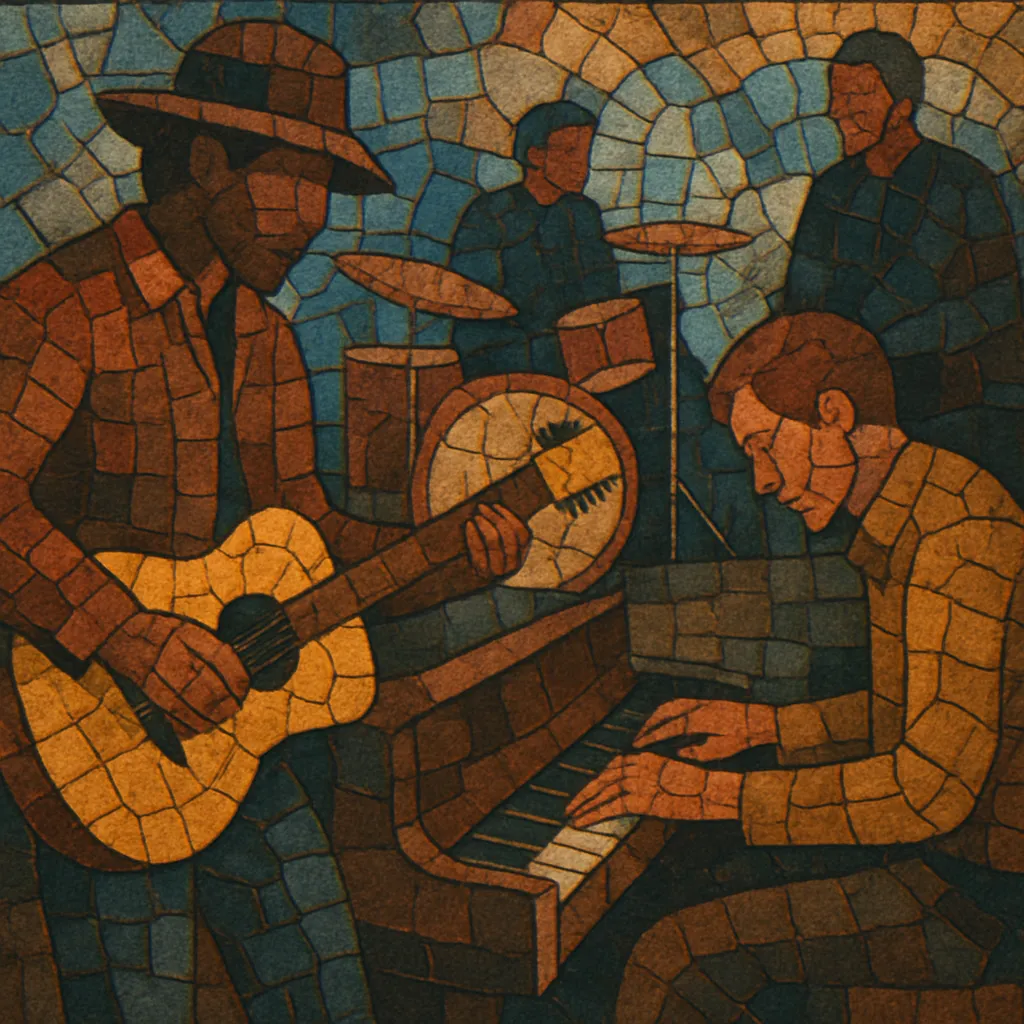
Roots rock is a back-to-basics strain of rock music that reconnects the electric band format with its foundational American roots in blues, country, folk, rhythm & blues, and early rock and roll.
It favors sturdy songcraft, earthy timbres, and groove over studio gloss—think twangy or gritty guitars, Hammond organ or piano, a steady backbeat, and plainspoken, story-driven lyrics. The style often carries a "live-in-the-room" feel, medium tempos, and blues-based progressions, evoking bar bands, roadhouses, and rural imagery.
Rather than chasing cutting-edge production or virtuosic excess, roots rock emphasizes feel, narrative, and tradition—bridging the immediacy of rock with the storytelling of folk and country and the emotional bite of the blues.
Roots rock emerged in the late 1960s as artists pushed back against psychedelic excess and studio experimentation, seeking a return to the core ingredients of American popular music. Bob Dylan’s John Wesley Harding sessions and The Basement Tapes (1967), The Band’s Music from Big Pink (1968), Creedence Clearwater Revival’s string of late-’60s singles and LPs, and The Rolling Stones’ Beggars Banquet (1968) and Let It Bleed (1969) set the tone—electric guitars, R&B backbeats, country inflections, and blues frameworks presented in unfussy, song-first productions.
Through the 1970s, roots rock coexisted with and overlapped country rock and southern rock. Neil Young’s country-tinged records, The Band’s continued output, and Stones albums like Exile on Main St. (1972) embodied the aesthetic. In the UK, the pub rock movement (e.g., Brinsley Schwarz, Ducks Deluxe) translated the back-to-basics ethos to small venues, influencing the early environment that would later foster punk while remaining grounded in R&B and rock ’n’ roll tradition.
The 1980s saw a mainstream resurgence via heartland-leaning artists like Tom Petty and the Heartbreakers and John Mellencamp, while Los Lobos and The Blasters connected roots rock with Chicano rock, R&B, and Americana. The 1990s continued the thread with bands such as The Black Crowes revisiting blues-based rock classicism, helping sustain roots rock alongside the broader Americana movement and alt-country.
In the 21st century, roots rock remains a durable approach—an aesthetic as much as a genre tag—shaping modern Americana and informing revivals of analog warmth, live-band tracking, and song-centered storytelling. Contemporary artists fold its DNA into heartland rock, alt-country, and blues-rock, keeping the emphasis on timeless forms, grooves, and narratives.
Use a classic rock-band core: electric and/or acoustic guitars, bass, drums, plus piano or Hammond organ; add harmonica, slide guitar, or mandolin for color. Favor warm, unprocessed tones—tube amps with mild breakup, dynamic mics on amps and drums, and minimal effects (spring reverb, slapback, light tremolo).
Build songs on blues- and country-derived progressions (I–IV–V, I–bVII–IV, IV add6, occasional 12-bar structures). Major keys and mixolydian flavors are common, with pentatonic and blues-scale lead lines. Melodies should be singable and direct, supporting clear choruses and memorable refrains.
Aim for steady, pocketed grooves: medium tempos (roughly 80–140 BPM), backbeat on 2 and 4, and occasional shuffles or swampy half-time feels. Keep drum parts economical; let hi-hat or ride patterns breathe. Bass should lock to the kick, walking or outlining roots and fifths with tasteful fills.
Prioritize live ensemble interplay—track rhythm section together when possible. Layer rhythm and lead guitars with complementary voicings (open chords, capoed parts, tasteful slide). Keep arrangements lean; allow space for vocals and storytelling. Mix for warmth and presence rather than hyper-compression.
Write grounded, narrative lyrics about place, work, love, memory, and everyday struggle. Use vivid but plainspoken imagery. Vocal delivery should be earnest and conversational; harmonies (especially thirds and fifths) underscore choruses. Let the song lead—virtuosity serves the story.

